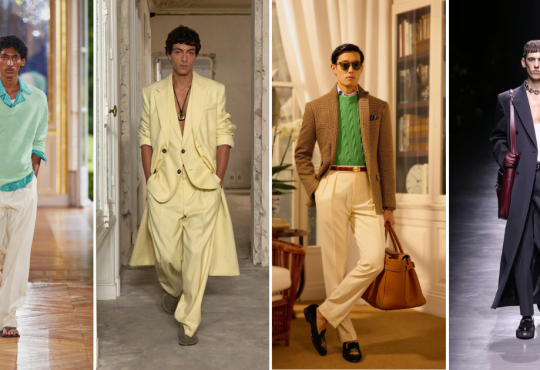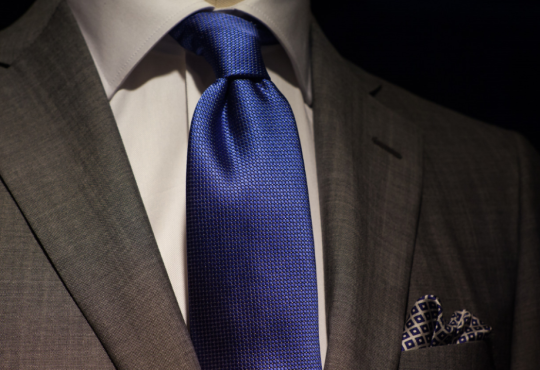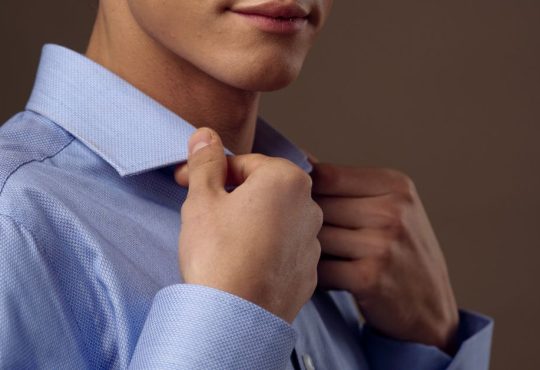Fashion is more than just clothing—it’s about confidence, self-expression, and presenting your best self. Yet, even stylish men sometimes fall into simple traps that undermine their overall look. From fit issues to mismatched colors, understanding common pitfalls is the first step toward dressing smarter. Here’s a comprehensive guide to fashion mistakes men commonly make—and how to avoid them.
Avoid These 10 Fashion Mistakes for Effortless Style

1. Wearing Clothes That Don’t Fit
Arguably, the most common style misstep for men is overlooking proper fit. No matter how high-quality or expensive your clothes are, if they don’t fit well, the outfit will look unpolished and unintentional. Fit is the foundation of style—it shapes how your body is presented and affects your overall confidence.
- Too Tight: Clothes that cling too closely to your body can restrict movement and feel uncomfortable. They often draw attention to areas you might not want to emphasize, creating a look that can appear forced or unflattering.
- Too Loose: Oversized or baggy garments can make even a slim frame look shapeless. Loose sleeves, wide trousers, or oversized jackets can hide your body’s natural lines, making your silhouette appear smaller and less defined.
Fix: Prioritize fit above all else. Investing time in tailoring—even small adjustments to sleeve length, trouser hems, or the waistline—can transform off-the-rack or affordable clothes into outfits that look expensive and deliberate. Remember: the right fit enhances your posture, your confidence, and your overall appearance, proving that style isn’t just about what you wear, but how it wears you.
2. Ignoring Proportions
Another common misstep in men’s fashion is neglecting the balance between different elements of an outfit. Even individually stylish pieces can look off when proportions are mismatched. For instance, pairing baggy jeans with an oversized hoodie can create a shapeless, top-heavy silhouette, while overly tight pants with a bulky jacket can feel constricted and awkward. Understanding how each piece interacts with your body’s natural lines is essential for a cohesive and flattering look.
Fix: Balance is everything. Slim-fit or tapered pants work best with slightly looser tops, creating a relaxed yet structured appearance. Conversely, tailored trousers or slim pants pair best with fitted shirts or jackets, maintaining clean lines and a polished silhouette. Always step back and consider the overall proportions of your outfit—this ensures that each element complements the other, giving you a look that is harmonious, intentional, and effortlessly stylish.
3. Wearing the Wrong Shoes
Shoes are the cornerstone of a well-put-together outfit, yet many men underestimate their impact. Even the most expensive suit or perfectly tailored outfit can be undermined by mismatched, worn-out, or inappropriate footwear. Common missteps include pairing sneakers with a formal suit, wearing scuffed or overly casual shoes in professional settings, or sticking to outdated styles that no longer complement modern silhouettes. Shoes not only complete your look—they communicate attention to detail and a sense of style.
Fix: Invest in a versatile collection of classic shoes that can elevate any outfit. Key staples include polished leather dress shoes, suede or leather loafers, Chelsea boots, and clean, minimalist sneakers. Regular maintenance is essential—keep your shoes clean, polished, and in good repair. Finally, always consider the Occasion: formal shoes for business or evening events, casual yet refined options for daytime outings, and minimalist sneakers for a relaxed but modern vibe. The proper footwear ensures that every outfit is cohesive, stylish, and confidently put together.
4. Overloading Accessories
Accessories are potent tools in men’s fashion—they can add personality, sophistication, and visual interest to an outfit. However, overdoing it can have the opposite effect, making your look feel cluttered and chaotic. Common pitfalls include stacking multiple bracelets, wearing several necklaces with bold rings, or pairing flashy watches with oversized hats simultaneously. Instead of enhancing your outfit, this can distract from the overall style and make even a well-thought-out ensemble appear haphazard.
Fix: Embrace the principle of “less is more.” Limit yourself to one or two well-chosen accessories per outfit. For example, a sleek watch combined with a leather belt or a subtle bracelet is usually enough to elevate your look without overwhelming it. Accessories should complement your outfit, not compete for attention. By choosing pieces that are understated, high-quality, and intentional, you allow your clothes and personal style to shine while adding just the right amount of flair.
5. Wearing Outdated Trends
Unthinkingly chasing trends or clinging to outdated styles can undermine your overall appearance. Baggy jeans, overly flashy patterns, neon colors, or retro logos that no longer align with current aesthetics can make even high-quality pieces appear mismatched or out of touch. Wearing trends that don’t suit your body type or personal style goals can create a disjointed appearance, leaving outfits feeling forced rather than effortlessly stylish.
Fix: Focus on building a foundation of timeless wardrobe staples. Essentials like a crisp white shirt, tailored chinos, classic denim, well-fitted blazers, and neutral sweaters never go out of style, serving as versatile pieces that can be mixed and matched for any occasion. When incorporating trends, do so selectively—introduce one statement piece at a time, whether it’s a bold jacket, patterned shirt, or seasonal sneaker. This approach allows you to stay current without compromising your personal style or creating outfits that feel outdated.
6. Neglecting Color Coordination
One of the easiest ways to unintentionally derail an outfit is through poor color choices. Clashing tones, overly bright combinations, or colors that don’t complement your skin undertone can make even the most thoughtfully assembled look appear chaotic or unpolished. Small missteps—like pairing olive pants with a green-toned shirt that doesn’t harmonize, or combining warm-toned shoes with a cool-toned outfit—can throw off your overall aesthetic without you even realizing it.
Fix: Build a cohesive color palette as the foundation of your wardrobe. Neutrals such as black, white, gray, beige, and navy provide versatility and serve as reliable anchors for outfits. Once you’ve established a neutral base, incorporate pops of color gradually. Accessories like scarves, shoes, belts, or pocket squares are excellent ways to introduce personality without overwhelming the ensemble. Paying attention to how colors interact ensures your outfits feel intentional, balanced, and effortlessly stylish.
7. Overlooking Grooming and Details
No matter how stylish or expensive your clothes are, neglecting grooming and small details can instantly undermine your look. Wrinkled shirts, unkempt facial hair, chipped nails, or scuffed shoes draw attention away from your outfit and give the impression of carelessness. Even a perfectly coordinated ensemble can feel incomplete or sloppy if these subtle but crucial aspects are ignored.
Fix: Make grooming and clothing maintenance a priority. Iron or steam your clothes to ensure they look crisp. Keep your shoes polished and in good repair. Maintain your facial hair according to your preferred style. Pay attention to small details, such as shirts that are properly tucked in, matching belts and shoes, and clean accessories. These minor adjustments may seem simple, but they collectively elevate your appearance, making your outfit look deliberate, refined, and effortlessly polished.
8. Wearing Clothes Inappropriately for the Occasion
Even the most stylish wardrobe can fall flat if clothes are worn in the wrong context. Arriving in a tuxedo for a casual brunch or wearing gym shorts in a business casual office creates a jarring impression and signals a lack of awareness. Misjudging the formality of an event can make you feel uncomfortable and out of place, regardless of how well-dressed you are.
Fix: Develop a clear understanding of dress codes and the context of each event. Casual attire doesn’t mean sloppy—opt for clean, well-fitted pieces even in relaxed settings. Formal or business wear doesn’t have to feel stiff—modern tailoring, classic accessories, and thoughtful details can elevate the look while remaining comfortable. Familiarize yourself with the basics of casual, smart casual, business, and formal dress codes so that you can dress appropriately, confidently, and stylishly for any occasion.
9. Ignoring Layering
Layering is one of the easiest ways to add depth, texture, and sophistication to an outfit, yet many men either avoid it or do it incorrectly. Poor layering can result in a bulky, awkward look, or mismatched pieces that disrupt your silhouette. Proper layering enhances both style and functionality, helping you transition effortlessly between temperatures and occasions.
Fix: Master the art of layering by combining complementary pieces. For example, pair lightweight sweaters with dress shirts, wear tailored jackets over turtlenecks, or add a structured coat over a blazer for a polished look. Pay attention to the fit, length, and proportions of each layer to maintain a streamlined silhouette. When done correctly, layering not only looks intentional and stylish but also adds versatility to your wardrobe.
10. Wearing Low-Quality or Cheap Fabrics

Even the most stylish outfit can be undermined by poor-quality fabrics. Cheap materials often wrinkle, fade, or wear out quickly, resulting in an uncomfortable feel on the skin. A sharp design made from low-quality fabric can appear cheap, regardless of its fashionability, ultimately diminishing your overall appearance and confidence.
Fix: Invest in quality basics crafted from natural fabrics like cotton, wool, linen, and cashmere. These materials look better, feel more comfortable, and stand the test of time. You don’t need to replace your entire wardrobe with high-end pieces—mix high-quality staples with trend-driven, affordable items to maintain style without breaking the bank. This approach ensures that your outfits always look polished, intentional, and durable.
Look Good, Feel Confident: Simple Style Wins
Dressing well isn’t about spending a fortune—it’s about understanding fit, proportion, and personal style. By avoiding these common mistakes, investing in key staples, and paying attention to details, any man can elevate his wardrobe and confidence. Remember: fashion should serve you, not the other way around. When in doubt, simplicity, fit, and quality always win.





